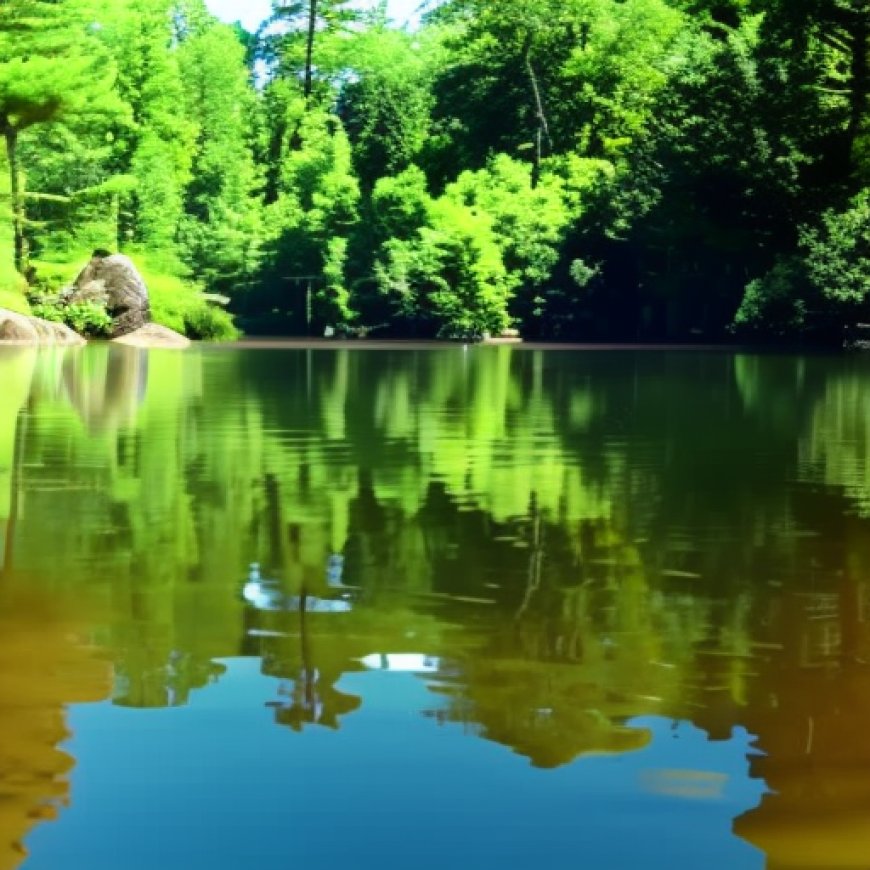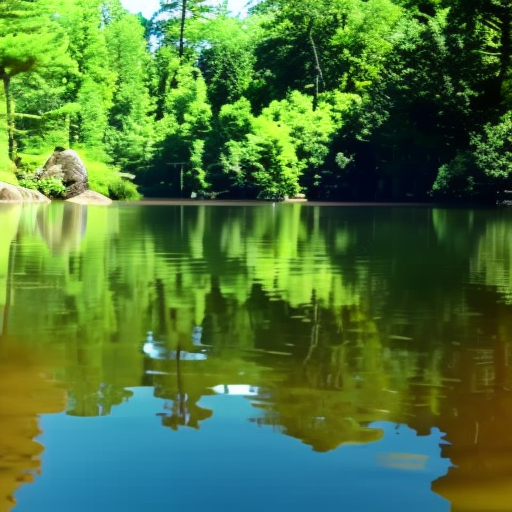UAPB Project Helps Restore Aquatic Ecosystems in DeGray Lake
UAPB Project Helps Restore Aquatic Ecosystems in DeGray Lake UAPB News


An Effort to Restore Aquatic Vegetation at DeGray Lake

The University of Arkansas at Pine Bluff (UAPB), in collaboration with the Arkansas Game and Fish Commission (AGFC) and the U.S. Army Corps of Engineers, is undertaking a project to restore aquatic vegetation in DeGray Lake. This initiative, which began in 2019, aims to enhance the ecological integrity of the lake and promote healthy populations of fish species. The project aligns with the Sustainable Development Goals (SDGs) by contributing to Goal 14: Life Below Water, and Goal 15: Life on Land.
Background
DeGray Lake, located in southwest Arkansas in the Ouachita Mountains foothills, used to have a thriving black bass fishery and supported a diverse aquatic plant community. However, by 2010, a combination of factors including human activities and weather conditions led to a significant decline in the survival and reproduction of aquatic vegetation. Consequently, the lake experienced a near complete loss of submersed aquatic plants.
The decline in the black bass fishery prompted regular requests from anglers for intervention by the AGFC. While the direct relationship between the abundance of aquatic plants and a healthy fishery is difficult to establish empirically, numerous studies have shown that fisheries respond positively to the presence of a healthy aquatic plant community.
Restoration Efforts
The primary goal of the project is to reestablish native aquatic plants in DeGray Lake to enhance its overall ecological integrity and promote healthy fish populations. Native aquatic plants, including coontail, American pondweed, and eelgrass, were cultivated in greenhouses at DeGray Lake. Once mature, these plants were transported by boat to floating vegetation dispersion cages attached to navigation buoys across the lake.
The use of floating cages ensures that the plants can disperse effectively regardless of water level fluctuations or weather conditions. Coontail, which spreads through stem fragments, was stocked in the cages. As waves and currents flow through the cages, fragments of the plant stems break away and drift until they settle on the lake bottom. The hope is that some of these stems will attach to the lake bottom and establish new colonies of the plant.
Monitoring and Results
Over the past three years, Scott Jones, small impoundment Extension specialist for UAPB, has been mapping and monitoring the growth of aquatic plants across 550 acres at 21 sites using down- and side-imaging sonar. The presence of vegetation detected by sonar was later verified using a remote-controlled submersible drone.
The results have been promising, with coontail, the main focus of the vegetation reestablishment program, expanding significantly in DeGray Lake. It is now found in 13 out of 21 sites and has even formed surface mats up to 18 feet deep in some locations. Eight out of 16 vegetation dispersion cages now have coontail growing directly underneath them, indicating the successful formation of new colonies.
The increase in submerged aquatic plants is expected to enhance the abundance of microbes and primary consumers, such as baitfish, crawfish, and snails. This, in turn, should positively impact the population and condition of secondary predators like black bass and crappie. Additionally, the presence of abundant native aquatic plants can help slow the spread of non-native plant species and provide anglers with more defined areas for fishing, potentially increasing catch rates.
Next Steps
The next phase of the project involves applying the lessons learned from DeGray Lake to other reservoirs that do not have a history of coontail growth. This expansion aims to replicate the success achieved in DeGray Lake and further contribute to the restoration of aquatic vegetation in Arkansas’s water bodies.
For more information on this project and other aquaculture/fisheries initiatives by UAPB, please contact Scott Jones at joness@uapb.edu.
The University of Arkansas at Pine Bluff is committed to providing its Extension and Research programs and services without discrimination based on race
SDGs, Targets, and Indicators
1. Which SDGs are addressed or connected to the issues highlighted in the article?
- SDG 14: Life Below Water – The article discusses the reestablishment of aquatic vegetation in DeGray Lake, which is related to the conservation and sustainable use of marine and coastal ecosystems.
- SDG 15: Life on Land – The article mentions the goal of enhancing the overall ecological integrity of DeGray Lake and promoting healthy populations of fish species through the reestablishment of native aquatic plants.
2. What specific targets under those SDGs can be identified based on the article’s content?
- SDG 14.2: By 2020, sustainably manage and protect marine and coastal ecosystems to avoid significant adverse impacts, including by strengthening their resilience, and take action for their restoration in order to achieve healthy and productive oceans – The reestablishment of aquatic vegetation in DeGray Lake contributes to the restoration of the lake’s ecosystem.
- SDG 15.1: By 2020, ensure the conservation, restoration, and sustainable use of terrestrial and inland freshwater ecosystems and their services, in particular forests, wetlands, mountains, and drylands, in line with obligations under international agreements – The project aims to restore the aquatic plant community in DeGray Lake, which is an inland freshwater ecosystem.
3. Are there any indicators mentioned or implied in the article that can be used to measure progress towards the identified targets?
- Indicator for SDG 14.2: Proportion of important sites for terrestrial and freshwater biodiversity that are covered by protected areas, by ecosystem type – The increase in the abundance of submerged aquatic plants, such as coontail, can be used as an indicator of the restoration and resilience of the lake’s ecosystem.
- Indicator for SDG 15.1: Proportion of important sites for terrestrial and freshwater biodiversity that are covered by protected areas, by ecosystem type – The successful reestablishment of native aquatic plants, including coontail, American pondweed, and eelgrass, can be used as an indicator of the restoration and sustainable use of the lake’s ecosystem.
SDGs, Targets, and Indicators
| SDGs | Targets | Indicators |
|---|---|---|
| SDG 14: Life Below Water | 14.2: By 2020, sustainably manage and protect marine and coastal ecosystems to avoid significant adverse impacts, including by strengthening their resilience, and take action for their restoration in order to achieve healthy and productive oceans | Proportion of important sites for terrestrial and freshwater biodiversity that are covered by protected areas, by ecosystem type |
| SDG 15: Life on Land | 15.1: By 2020, ensure the conservation, restoration, and sustainable use of terrestrial and inland freshwater ecosystems and their services, in particular forests, wetlands, mountains, and drylands, in line with obligations under international agreements | Proportion of important sites for terrestrial and freshwater biodiversity that are covered by protected areas, by ecosystem type |
Behold! This splendid article springs forth from the wellspring of knowledge, shaped by a wondrous proprietary AI technology that delved into a vast ocean of data, illuminating the path towards the Sustainable Development Goals. Remember that all rights are reserved by SDG Investors LLC, empowering us to champion progress together.
Source: uapbnews.wordpress.com

Join us, as fellow seekers of change, on a transformative journey at https://sdgtalks.ai/welcome, where you can become a member and actively contribute to shaping a brighter future.







